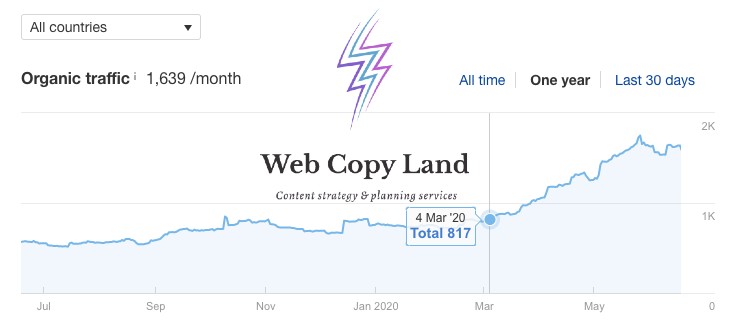A client came to us with a French e-commerce store in January 2020.
The store is selling automotive goods, and it was gradually growing in organic traffic.
The client wanted to add a blog to the website to make sure he covers the interests of his audience.
The blog would have to evolve around automotive modifications, DIY upgrades, – anything that would bring the readers one step closer to ordering spare parts from the store.
The site owner also wanted to make sure his content strategy is laser-focused. Wasting time and money publishing ineffective content was not an option.
We helped create a custom content plan for the new blog in March 2020 – and the organic traffic experienced an impressive spike. Here’s a snapshot of the store’s growth from Ahrefs.com:

Let’s get to the point and explain how we got the client’s site to the new heights.
Content Planning for an Automotive E-Commerce Blog – The Workflow, Tips, and Results.
The order came in on March 6, 2020 & we got to work.
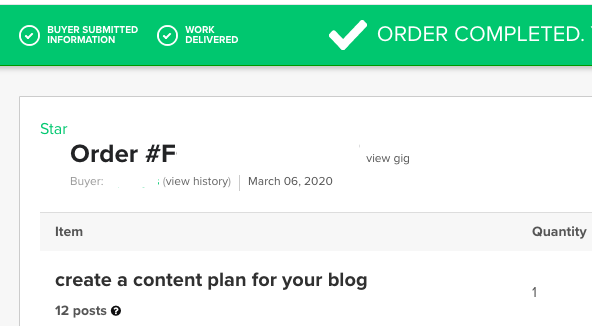
1) Get product categories and research keywords around them.
First and foremost we created a list of all the main product categories of the store.
A blog is a body of content that supports and expands all the “money” pages of a site.
Considering the fact that our client has an e-commerce store – an e-commerce blog needs to be centered around the main product categories of the store.
So each product category will be roughly equal to a cluster of blog posts (either blog categories or tags) so you can tag your blog posts accordingly and silo your site.
Blog posts on brake systems need to promote the brake pads and disks in your store, blog posts on lighting systems need to link to the lightbulb products – this is essential to silo your site for maximum relevance.
Expand the keyword list in each category product category – use a keyword tool, Google autocomplete suggestions, and related Google searches.
What we have as a result are several sets of keywords for the future blog, all split according to the main product categories of the store.
2) Harvest and research competitors
If you google some of the most popular keywords for your product categories – all the sites you see on the results pages are your competition.
This is where many business owners get it wrong – in SEO, everything you see on Google is your competition. Some of the results may be actual competing stores, some may be informational, and some completely unrelated (if the niche is not saturated yet).
That means you will have to beat all of those sites, and to do that you need to first understand what they are doing right.
Now, this is the part most business owners can’t afford, because you need advanced SEO tools for it.
Harvest 30-40 SERP competitors and plug them into an organic traffic spy tool (e.g. Ahrefs).
You will see some of the keywords that bring organic traffic to their sites:
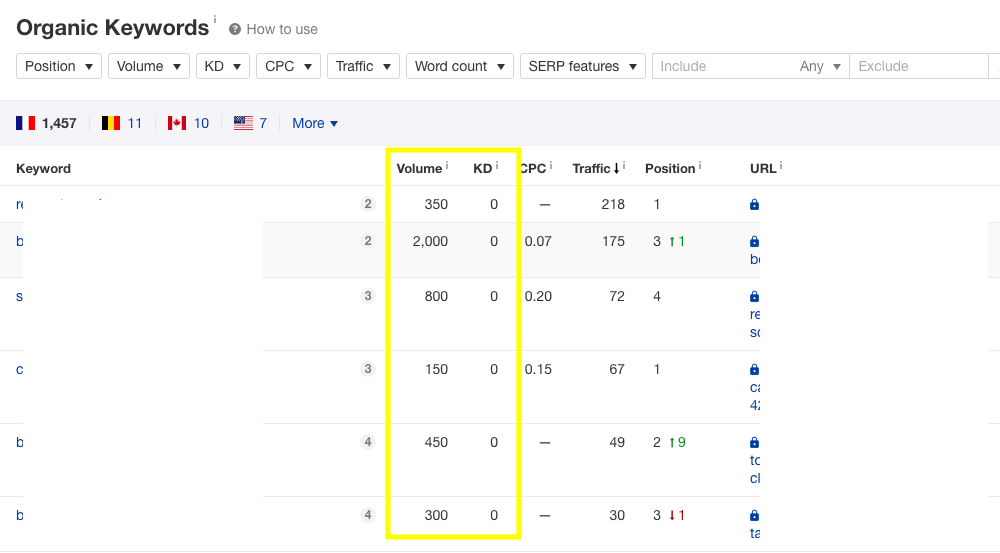
See the keywords that bring the most traffic to your competitors from Google, evaluate the competitiveness of the keywords, and pay attention to their search volume.
You need to opt for maximal search volume with minimal KD (keyword difficulty).
If you have no access to SEO tools (good ones are pricey) – you can open each competitor’s site or blog and see what they are doing. There are still some conclusions you can draw from that, even though there is a lot of guesswork.
After this stage of keyword research you get even more keyword ideas to use in your content plan. Unlike the previous set of “desired” keywords – here you actually know that these search queries work for your competition.
3) Evaluate trends
All keyword tools are working with past data and extrapolate it on future. But search phrase popularity is not linear.
That is why you can target keywords with no search volume, and that is also why you need to test all your ideas with Google Trends.
The Google Trends tool is extremely helpful – it gives you understanding of how popular the keyword has been over time.
When we inspect the popularity of one of the main keyword for our clients’ ecommerce store, it’s clear he’s on the right track:
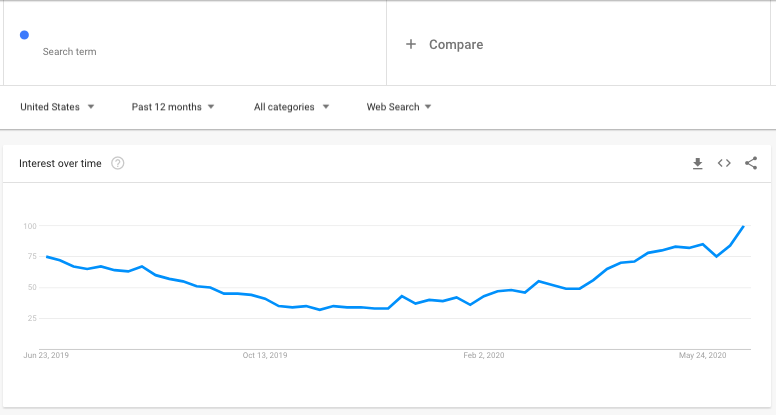
We zoom in further and inspect latest data:
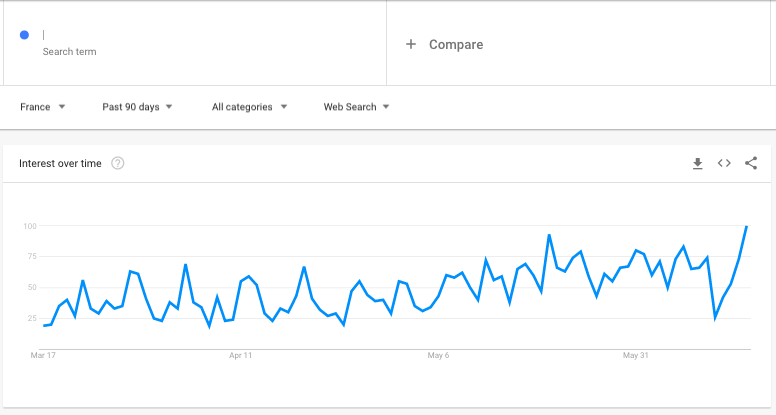
The topic is definitely “alive” and has potential.
What’s great too is that Google Trends gives us even more keyword ideas, scroll down and see all the “related”, “top” and “rising” queries:
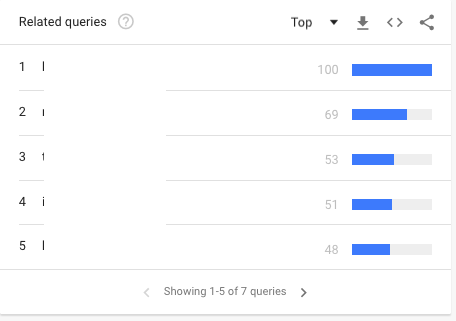
These search phrases will make a great addition to our keywords list.
Google Trends helps test our assumptions and find additional keyword ideas.
5) Run all keyword ideas through the human filter
At this point we have a huge list of keywords – which ones deserve a blog post and which ones do not?
We need to evaluate them against our buyer persona and see how the search phrases relate to our customers’ problems.
We used our clients’ input to create a customer person and list their main needs.
Some keywords definitely take the customer closer to the solution for their problems, some are purely entertaining and informational. We’ll leave the latter aside for now.
Based on the customer intent, we’ve selected search queries that deal with automotive parts comparison, latest models, lists of brands, spare part types, and so on.
The backbone of our e-commerce blog content plan will be made of product-related and commercially relevant search queries.
6) Add the “fun” stuff – linkable, shareable content.
When we create content plans for our clients, we make sure each content plan has a couple of “link magnets”.
Those are posts that
a) could do well on social media
b) are click-provoking
c) are linkable and make outreach easy.
Usually these posts are either designed to create an emotional response (top mistakes with X, signs you need X, etc.) – or they are lengthy and comprehensive guides that cover whole topics A to Z.
We suggest our clients to publish posts like that once every two weeks or so – and spend at least 10 hours promoting them. Normally a virtual assistant will do a great job e-mailing prospects and asking for links and social media shoutouts.
Getting some links and social media traffic to your inner post is an amazing ranking signal for Google and helps your site in the long run.
In fact, one of the “link magnet” posts ended up getting 72% of all the new blog’s traffic:

7) Secret sauce & content calendar report
We’ve accumulated some tricks and hacks over the years – if you planed content for hundreds of money-making blogs you would too.
The customer gets their content plan shared to them, accompanies by comments, content examples, and keywords to use in each post idea:

The content plan template for this e-commerce blog is completely writer-ready – you can copy/paste the instructions to writers and have them produced exactly the content that is necessary.
Along with the content plan each customer is getting a set of custom suggestions. Those are always practice-based actionable observations we put together while working on each content plan
8) First content planning and research results
The articles from the content plan were done by mid-April, and the site started getting more organic traffic:

Moreover, in just 2 months after starting the content plan implementation, the blog is responsible for 22% of the site’s organic traffic:
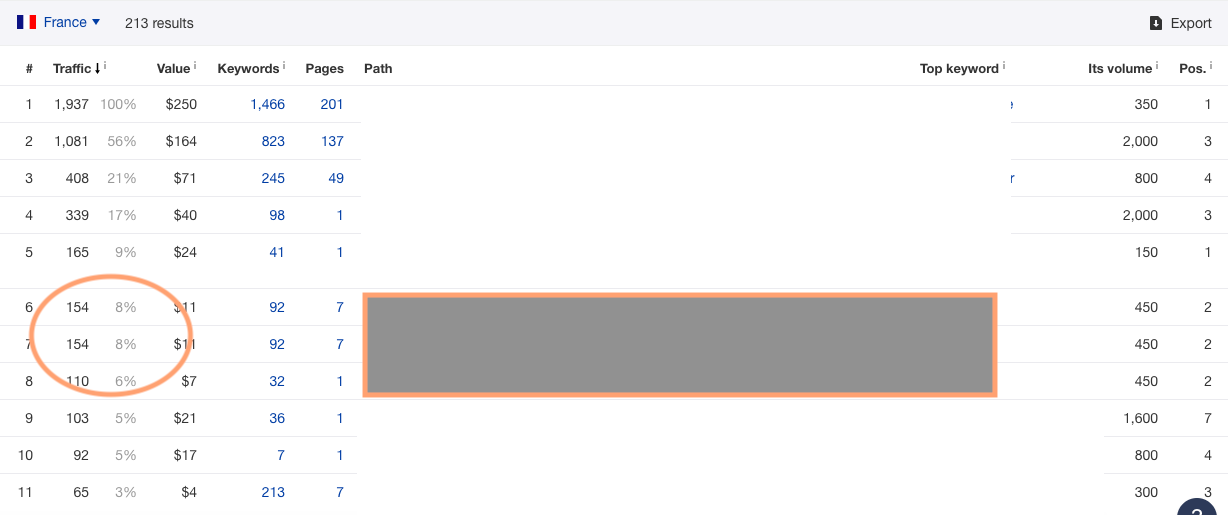
The client has reported a 20% increase in sales in June 2020 compared to June 2019, which is a great result considering how bad most of the businesses are doing because of the COVID-19 lockdowns.
The “link magnets” posts helped build outreach campaigns and attract more links, which will contribute to long-term growth:
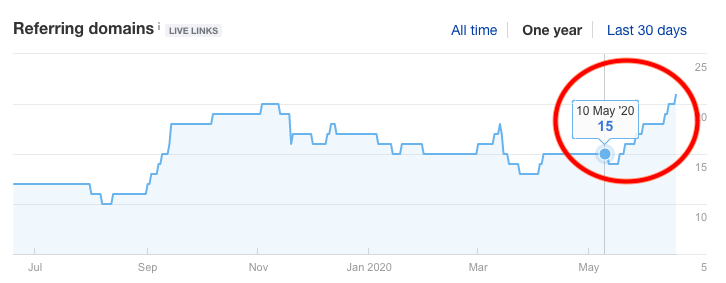
9. Next step – content strategy re-evaluation
The next important stage is getting a Google Search Console audit. that the customer will be getting in July – approximately 4 months after publishing the recommended articles.
The audit is extremely important to keep your blog effective. When we inspect customers’ raw Google Search Console data we get a clear picture on:
- what content works
- what articles turned out to bring less traffic than expected
- what the true search traffic potential of the site is
- what search queries “deserve” their own dedicated landing pages
- how to make sure there is no keyword cannibalization – i.e. pages don’t compete with each other over the same keywords.
Final words – the importance of content planning and research
Blogging without a content plan means wasting time and money in 90% of the cases.
In order to make sure you invest into content that works you need to run serious multifaceted research.
The client is on his way to double his organic traffic in 2020 – which means more sales, larger audiences for retargeting ads, and more data for conversion optimization.
We’ve helped grow hundreds of blogs in the past years, and each time we take on a project you get the best deal available on the market. Content planning and evaluation is our strict focus, and we are the best at what we do.
Content marketing for e-commerce is especially tricky, because most store owners stick to product reviews posts without properly educating and entertaining their audiences.
If you need help with your e-commerce store blog – order a content plan today!
